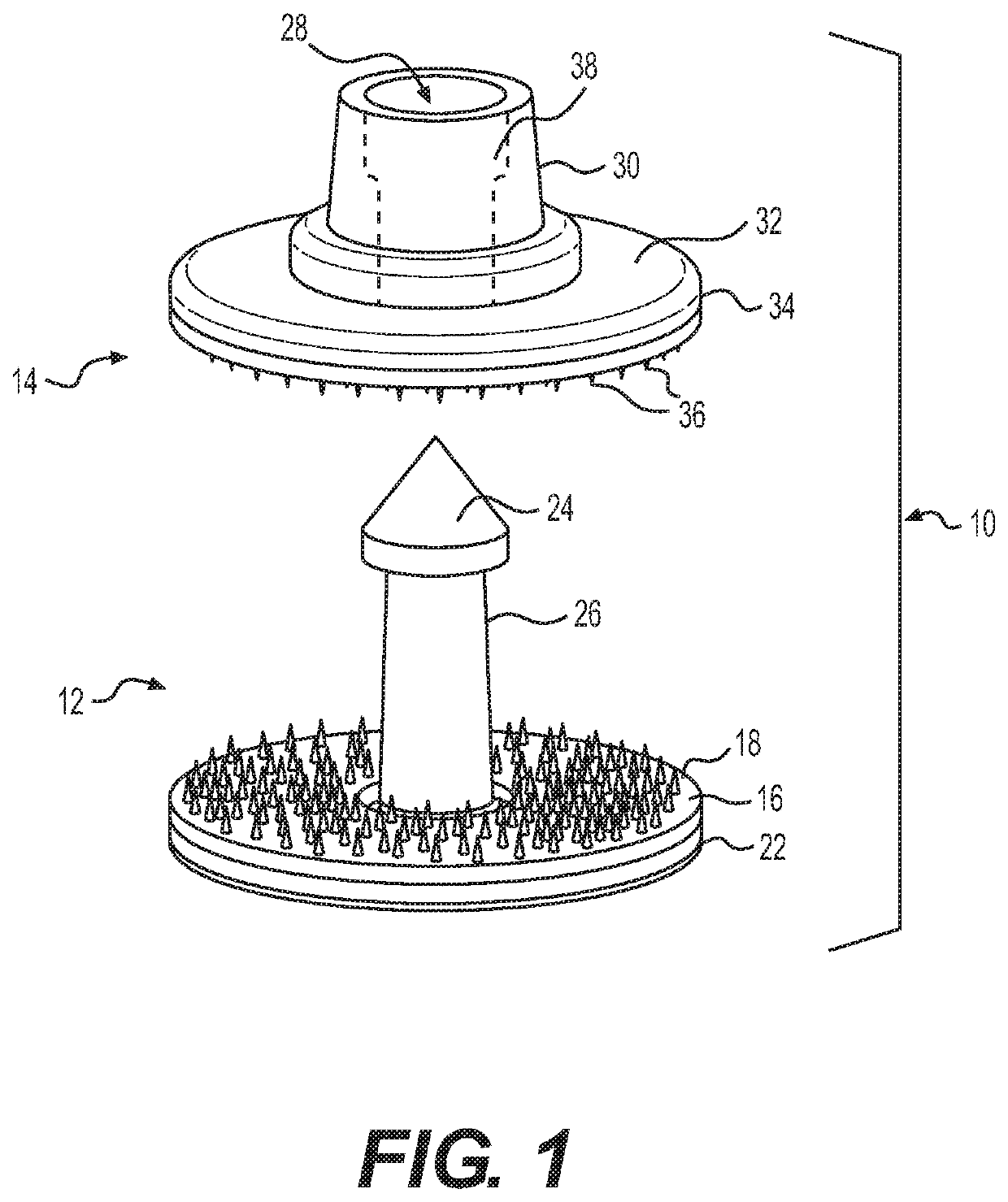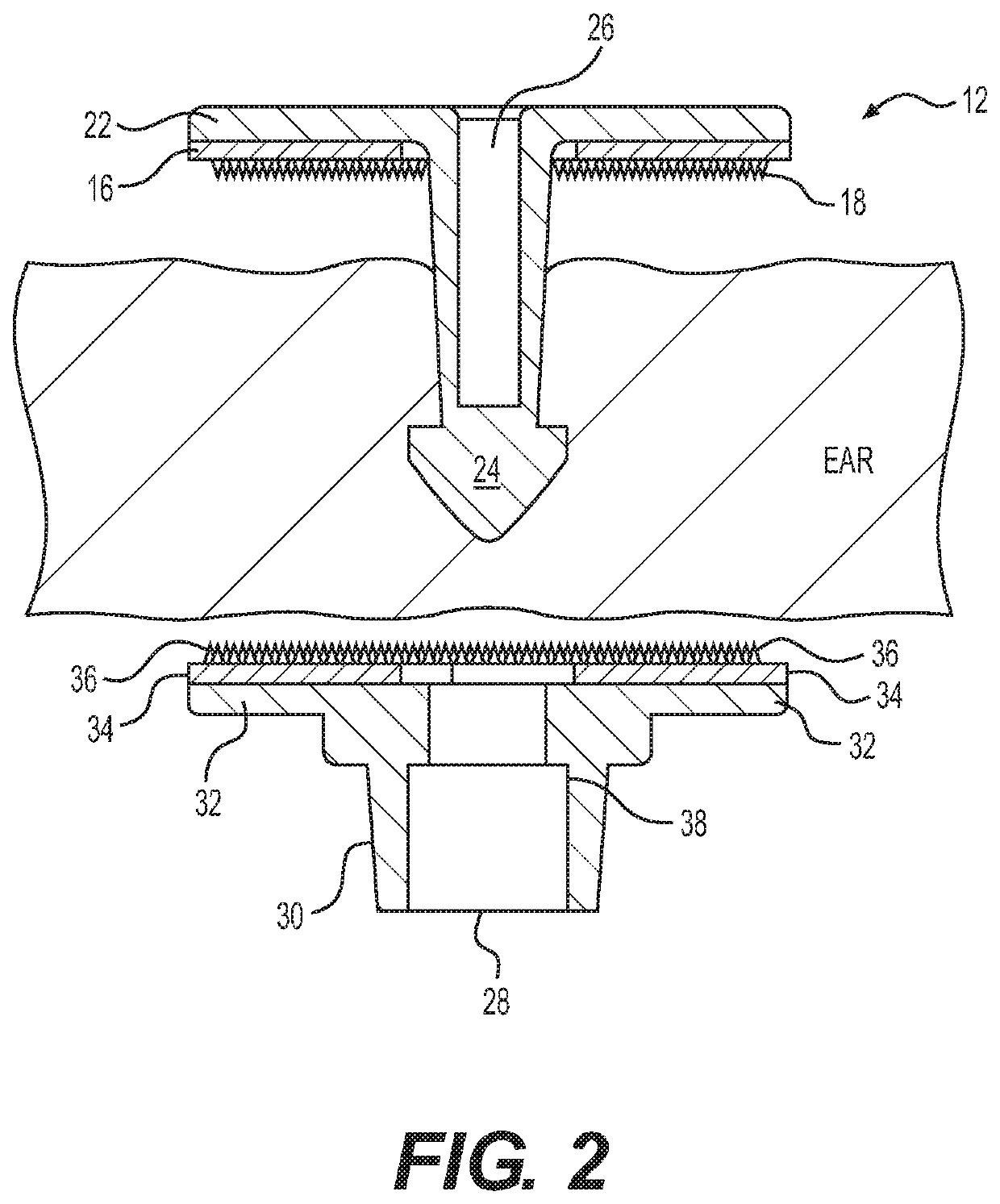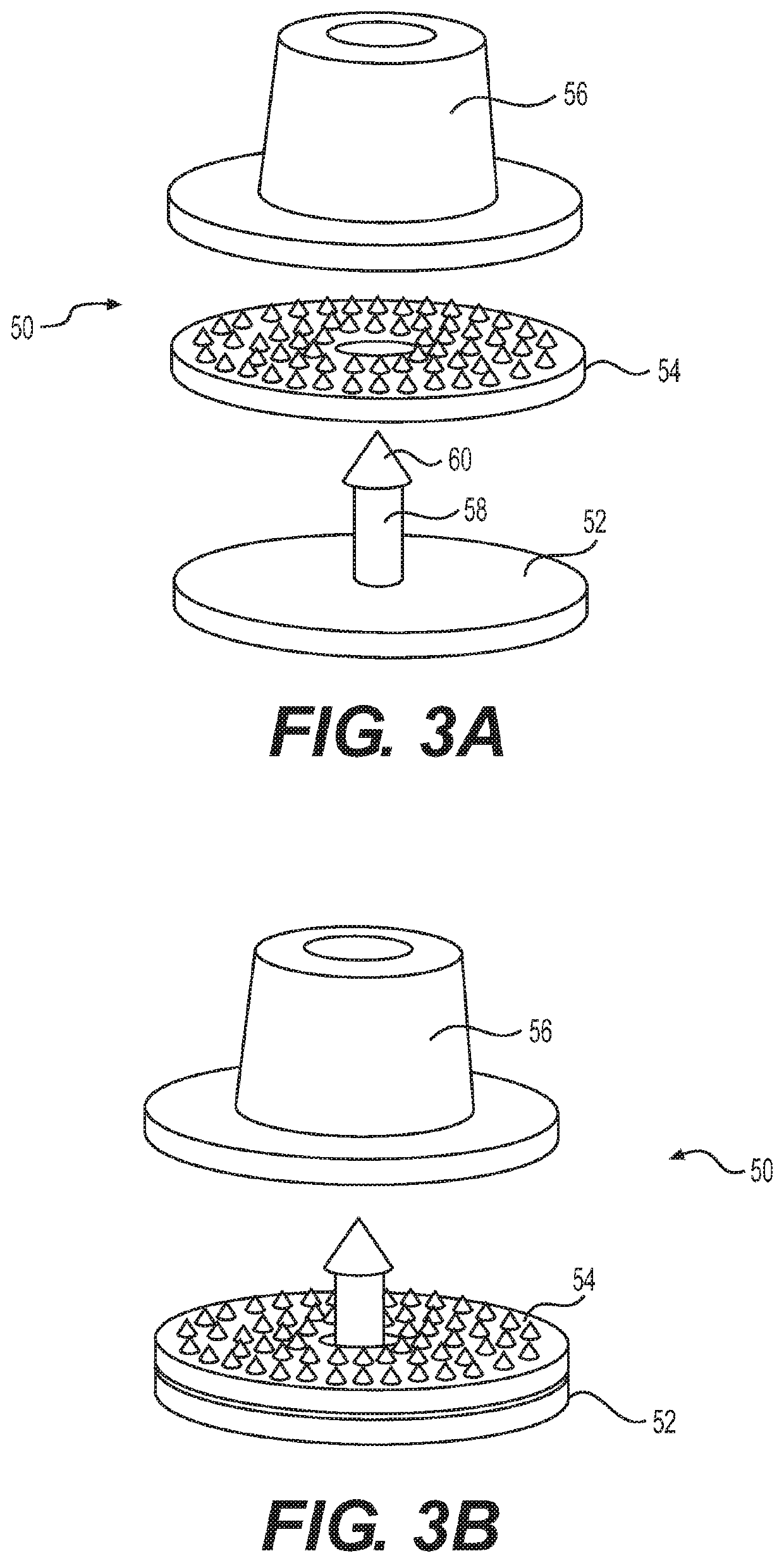Single or multi-dose delivery platform for veterinary applications
a single or multi-dose technology, applied in the field of veterinary applications, can solve the problems of inflexible management logistics, adverse effects on animal health, operational expense and production yield, and inherent clinical and operational limitations of current vaccine delivery practice to livestock
- Summary
- Abstract
- Description
- Claims
- Application Information
AI Technical Summary
Benefits of technology
Problems solved by technology
Method used
Image
Examples
first embodiment
Example 1: First Embodiment of Ear Tag for Delivery
[0044]As shown in FIG. 1, the system 10 has a male member 12 and a female member 14. The male member 12 includes a planar surface 16 having uniformly distributed thereon microneedles 18 extending outwardly at a perpendicular angle and a support base 20 which may also serve as a reservoir 22. A pointed tip 24 is connected via a shaft 26 to the planar surface 16 and support base 20. The female member 14 has a receiver 28 in a shaft 30 connected to a support base 32 having on its outside surface 34 a uniform distribution of microneedles 36. The microneedles extend perpendicularly from the base and in parallel to the male portion shaft.
[0045]The shaft 26 is inserted through the ear into the female member 14 so that the tip 24 penetrates the receiver 28. The receiver 28 includes a shoulder 38 that snaps under the tip 24 to secure it within the receiver 28. The shaft can be round, square, rectangular, triangular or other shape. The length...
second embodiment
Example 2: Second Embodiment of Ear Tag for Delivery
[0049]FIGS. 3A and 3B depict a second embodiment 50 in which the therapeutic member 54 is separate from the male support member 56 with shaft 58 and tip 60 and female member 56. This allows for use of the therapeutic member 54 with currently available ear tags to form a composite device as shown in FIG. 3B.
[0050]Like the affixed therapeutic member shown in FIGS. 1 and 2, the separate therapeutic member 54 slides over the male portion shaft 58 and rests on the base 52. This ensures that the separate therapeutic member 54 remains on the male portion shaft during application. An additional snap-fitting element that prevents disengagement may also be used.
third embodiment
Example 3: Third Embodiment of Ear Tag for Delivery
[0051]In this embodiment 60, depicted in FIG. 4A, two separate therapeutic members 62 and 64 are utilized as an insert for use with a conventional ear tag. FIG. 4B is a schematic of the piece where there is a region with one time of release and a second with a second time of release. FIG. 4C is the insert with regions for release of different agents, such as different antigens and, if desirable, different PK / release profiles. These regions may have different release kinetics due to loading of agent, due to thickness of the region (thicker will provide longer term release), through the use of materials such as a biodegradable polyester with a period of weeks to months for degradation compared to, for example, a sugar matrix that releases within a few days at most, the use of an enteric coating and a pH modifier, or a water soluble coating which dissolves in contact with blood or interstitial fluid released when the ear is punctured.
[...
PUM
 Login to View More
Login to View More Abstract
Description
Claims
Application Information
 Login to View More
Login to View More - R&D
- Intellectual Property
- Life Sciences
- Materials
- Tech Scout
- Unparalleled Data Quality
- Higher Quality Content
- 60% Fewer Hallucinations
Browse by: Latest US Patents, China's latest patents, Technical Efficacy Thesaurus, Application Domain, Technology Topic, Popular Technical Reports.
© 2025 PatSnap. All rights reserved.Legal|Privacy policy|Modern Slavery Act Transparency Statement|Sitemap|About US| Contact US: help@patsnap.com



